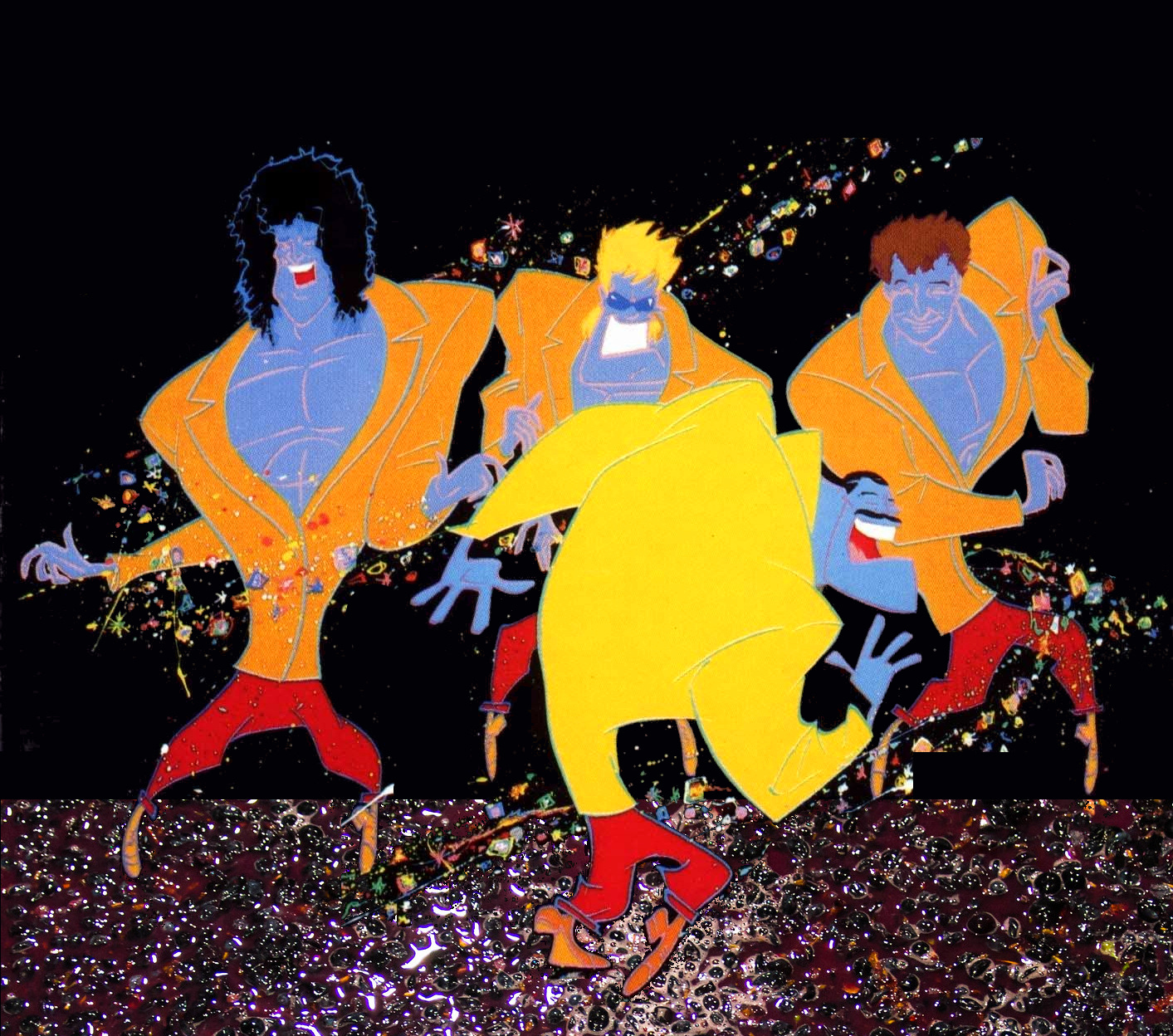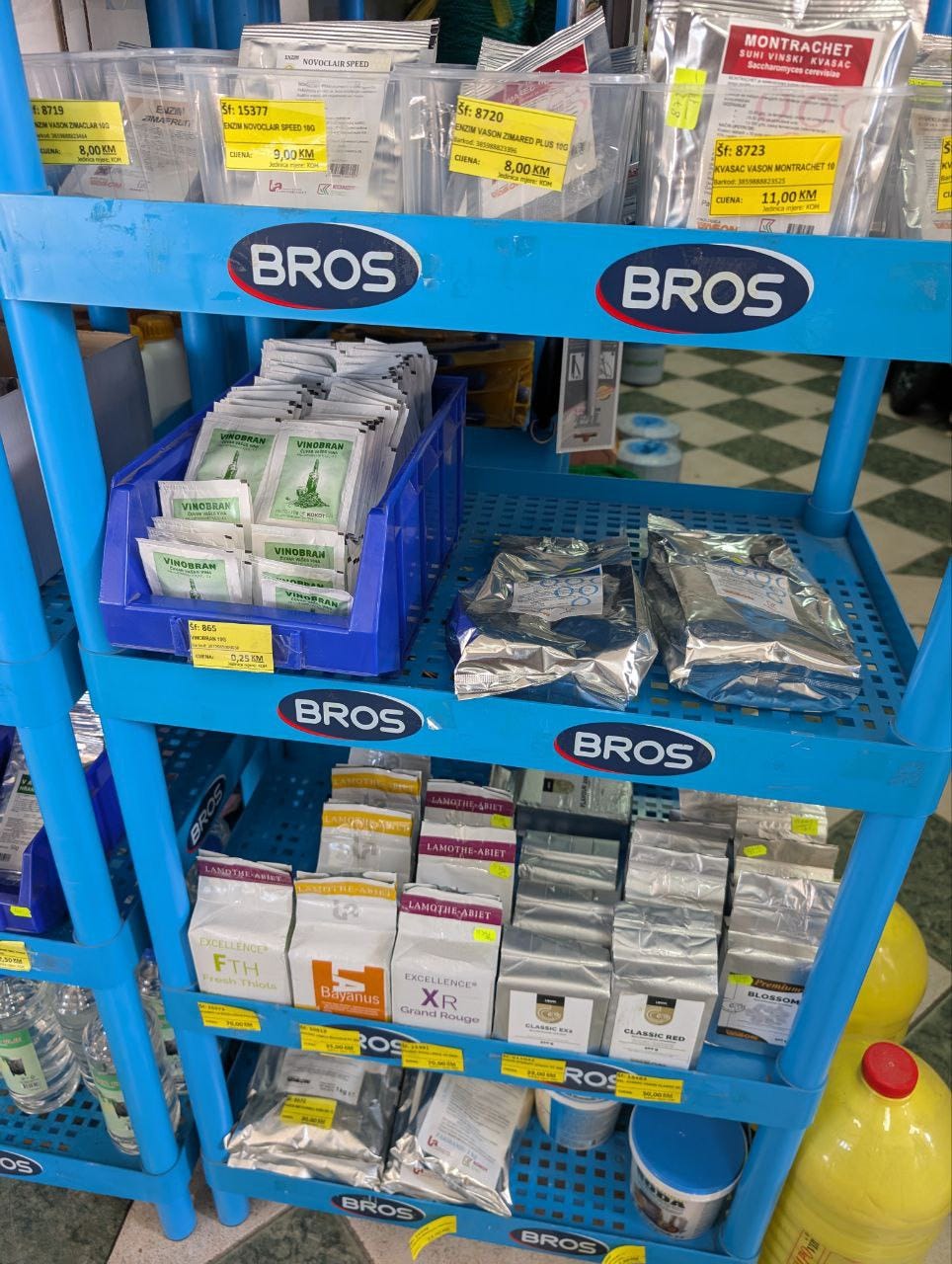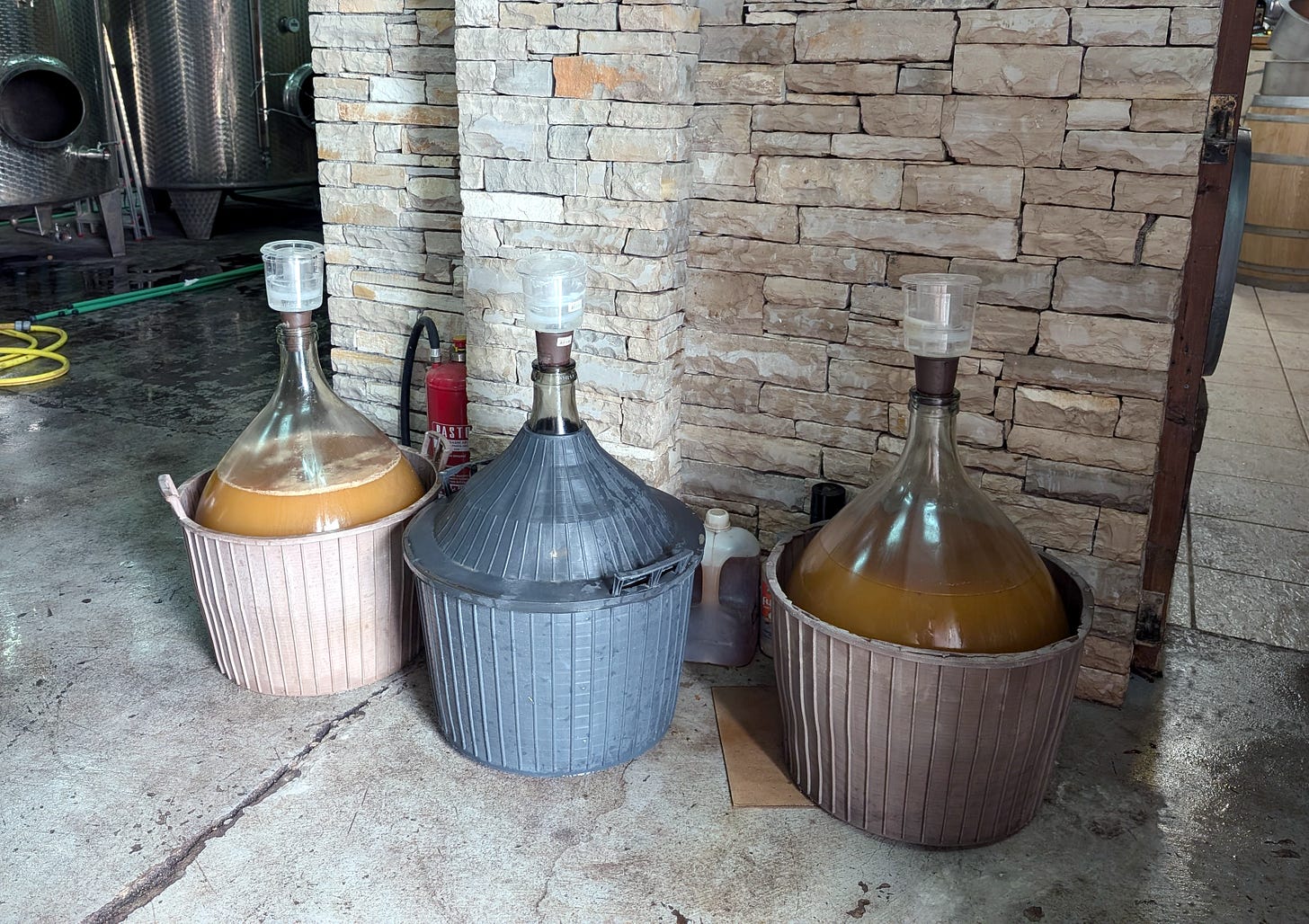It's a Kind of Magic
An ode to fermentation
My socials fill up with harvest photos at this time of year. It’s joyful and a bit primal. Nature controls the parameters of how and when, no matter how hard we try to predict and plan.
The act of picking grapes initiates an even more fundamental process.
Fermentation is to wine what oxygen is to humans. It’s both essential and deadly at the same time. There is no wine without it, yet fermentation’s transformative effects can destroy as readily as they create.
It’s a kind of magic.
It’s magic because you start with fresh fruit, then just a week or two later you have wine. It’s magic because this process will start without any human intervention, if you leave it be. It’s magic because the raw material is fragile and prone to spoilage, but the end result is stable, resistant to bacteria and capable of enduring for years. It’s magic because fermentation is a frothy, bubbly affair that emits heat and clouds of CO₂.
And every child knows there’s no magic without smoke and stinks.
Do you want to feel the magic? All you need to do is visit a winery during harvest. The distinctive aromas of fermentation assault your senses as you enter. The smells are pungent, fruity and even a bit feral. Take a look into an open tank or tub and check out the yeasty fest gyrating before your eyes. Once it gets going, it’s irrepressible, even violent.
But now we have science
Smart creatures that we are, we now understand fermentation. We know it isn’t really magic, we can control it and make it happen to order. Much of this is thanks to Louis Pasteur, who proved in the 1860’s that fermentation is the result of yeasts multiplying and consuming sugars to create alcohol. He invented pasteurisation as a way of stabilising products such as milk, beer or wine, either to prevent them fermenting at all (in the case of milk) or to freeze-frame their progress before unwanted bacterias take hold (in the case of beer or wine).
Pasteur also established the process of isolating ‘good’ yeasts, and developed the idea that you can inoculate with a desirable culture to avoid nasty surprises. His work transformed the bread and beer industries and created a market for packaged yeasts. Eventually it would do the same for wine.
Wine technology accelerated in the 1950’s, even though selected yeasts were available since the turn of the 20th century. The availability of SO₂ in powder or tablet form coincided with the development of stainless steel tanks, temperature control systems and specific selected yeasts for wine. The magic of fermentation could now be tamed.
Sulphur your grapes before the ambient yeasts begin their alchemy. Nuke the indigenous cultures clinging to the skins, inoculate with a safe strain of Saccharomyces cerevisiae. Keep the temperature cool so the fermentation proceeds at a measured, consistent pace, never reaching that fever-peak of yeast-ecstasy.
Welcome to modern winemaking. Welcome to a world where there’s no magic any more. Welcome to a world where yeasts don’t just feed on the grape’s natural sugars. The chemical industry has developed a whole range of “yeast junk food” (as one of my colleagues described it) - Diammonium Phosphate (DAP) and enzymes galore.
These innovations have their place. They’ve enabled fermentation to become effortlessly reliable, to take place according to a schedule, not at nature’s behest. Mass produced wine wouldn’t exist without these powders and packages. When you have a single tank containing 50,000 litres of grape juice, you might not take the risk that the ambient yeast Gods are feeling benevolent.
Cheap supermarket wines need to conform. They have to be identical every year. The same amount of alcohol, the same monotone flavour. Nature can’t achieve that, but a bucket of selected yeast and a few other nips and tucks can.
Let the magic happen
I still prefer the magic. I’m in Bosnia-Herzegovina right now, making wine here for the second year in a row. I’ve learnt to love the start of vintage - the nervous waiting game, watching a tub full of crushed grapes looking like they could oxidise in a heartbeat. Wondering when nature will take over, when the magic spell will conjure the yeasts into action.
Start with healthy, unsprayed grapes and it always will. Maybe not exactly how and when you imagined. But it will.
Left to its own devices, nature will create something more beautiful and unique then a packet of yeast ever could. You just need a little faith. The art direction is not entirely in your hands.
Nature’s fermentation party has a broader guest list. Instead of a single strain, you can expect ten or twenty different families, maybe hundreds of different cultures. Say hi to Kloeckera, Hanseniaspora, Pichia, Candida and more. None of them are big drinkers, they’ll fade away once alcohol levels reach seven percent. Fear not, our favourite bully-boy Saccharomyces Cerevisiae is ever-present to finish the job.
This is diversity. With those diverse yeasts come a whole panoply of fascinating flavours and aromas. If you want to get pretentious, we can talk terroir. It changes every year and in every location. Yeasts hang out in the vineyard, in the air, on the winery roof.
I like diversity, surprise and the thrill of the unknown. It makes life interesting. It makes wine interesting too. Fermentation to me is like a child running around laughing and having the time of their life. Why constrain it? Why try to box it in?
Let it run riot. Let it frolic. Enjoy the moment.
It’s a kind of magic.






Great piece, Simon. One thing I heard recently, though, was that the yeasts doing most of the work in reality are those found in the winery, not in the vineyard. Curious to see any evidence about this.
Wonderful piece as usual, Simon -- and good luck with your own fermentations!
Apropos “watching a tub full of crushed grapes looking like they could oxidise in a heartbeat,” readers should be aware that allowing one’s must to oxidize is with white grapes a reliable means of securing stability and resilience in the resulting wine. To the extent that this seems counterintuitive, an inoculative metaphor helps.